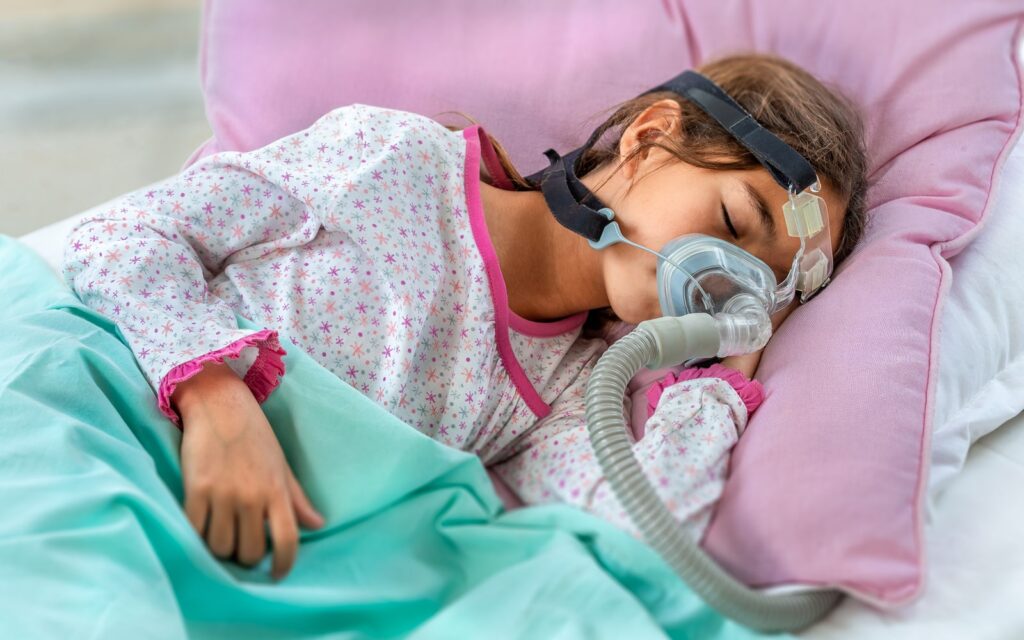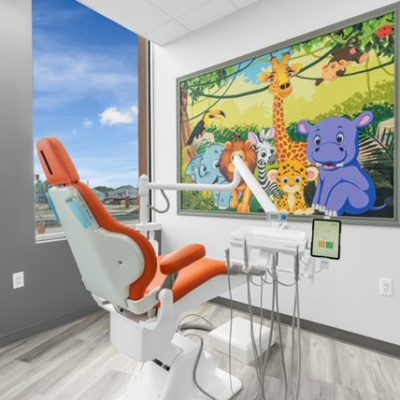Introduction
Sleep apnea is a condition in which a sleeper will stop breathing multiple times during the night. Obstructive sleep apnea gets its name from the upper airway blockage that interferes with breathing. Air passes through the nose and mouth through these passages into the lungs. This repeated cessation of breathing interferes with the child’s sleep. Breathing pauses can happen multiple times during the night. These periods are often accompanied by snoring. Other signs are sleepwalking and wetting the bed.
Understanding Sleep Apnea In Children
Children who suffer from sleep apnea are usually between 3 and 6 years of age. In children and adults the muscles in the neck and head aid in keeping the airway clear. After falling asleep these muscles can relax and allow the passage to close. In most children, the most common cause will be adenoids or tonsils that have become enlarged. These glands can swell as the result of infection, or may simply grow to be too large. This can cause the airway to become blocked during sleep.
Some other common causes of sleep apnea are:
- Childhood obesity
- Growths or tumors in the airway
- Pierre-Robin syndrome
- Down syndrome
Symptoms
Symptoms that can tell you if your child is experiencing sleep apnea include:
- Noisy breathing while sleeping
- Snoring
- Breathing pauses that last a few seconds or a minute
- Breathing through the mouth
- A nasally voice
- Restless sleeping
- Irritability or sleepiness during the day
- Daytime hyperactivity
- Bedwetting
- Behavioral problems
- Night terrors or sleep walking
- Problems learning
- Headaches in the morning
Identify if your child has sleep apnea
Your healthcare provider can help you identify if your child has sleep apnea. They’ll ask for a complete list of symptoms, health history, and sleep patterns. Keeping a sleep journal that tracks their habits, snoring, and nighttime behaviors can help. Your physician will also give your child a standard exam. In some cases, they may call for a sleep study.
Sleep studies
Sleep studies are the most effective way to determine if your child has sleep apnea. It can be difficult with younger children or those who have trouble cooperating. In many cases, this study will be done in a special lab where they can be monitored. The technician will track:
- Brain activity
- Heart electrical activity
- Oxygen levels in the blood
- Abdominal wall and chest movement
- Airflow through the mouth and nose
In some cases
It may be possible to perform this test in your own home. In other cases, you may be referred to a special sleep expert for treatment. Treatment for the condition is determined based on the identified cause. These treatments can include:
- Surgery to extract the adenoids or tonsils
- Weight loss for obese children
- A CPAP machine to help them breath while sleeping
- Rapid maxillary expansion using a special device
- Steroids can help with enlarged tonsils
- Avoiding pollutants, allergens, and secondhand smoke
Understanding The Risks Your Child Faces With Sleep Apnea
Sleep apnea can cause a broad range of complications. These include lower than normal levels of oxygen in the blood and difficult breathing. Permanent heart and lung damage is a very real possibility as well. In many cases, children may experience poor development and growth from sleep apnea. Speak to your physician to get more information.
Sleep apnea is a condition in which a sleeper will stop breathing multiple times during the night. Obstructive sleep apnea gets its name from the upper airway blockage that interferes with breathing. Air passes through the nose and mouth through these passages into the lungs. This repeated cessation of breathing interferes with the child’s sleep. Breathing pauses can happen multiple times during the night. These periods are often accompanied by snoring. Other signs are sleepwalking and wetting the bed.
Understanding Sleep Apnea In Children
Children who suffer from sleep apnea are usually between 3 and 6 years of age. In children and adults the muscles in the neck and head aid in keeping the airway clear. After falling asleep these muscles can relax and allow the passage to close. In most children, the most common cause will be adenoids or tonsils that have become enlarged. These glands can swell as the result of infection, or may simply grow to be too large. This can cause the airway to become blocked during sleep.
Some other common causes of sleep apnea are:
- Childhood obesity
- Growths or tumors in the airway
- Pierre-Robin syndrome
- Down syndrome
Symptoms that can tell you if your child is experiencing sleep apnea include:
- Noisy breathing while sleeping
- Snoring
- Breathing pauses that last a few seconds or a minute
- Breathing through the mouth
- A nasally voice
- Restless sleeping
- Irritability or sleepiness during the day
- Daytime hyperactivity
- Bedwetting
- Behavioral problems
- Night terrors or sleep walking
- Problems learning
- Headaches in the morning
Your healthcare provider can help you identify if your child has sleep apnea. They’ll ask for a complete list of symptoms, health history, and sleep patterns. Keeping a sleep journal that tracks their habits, snoring, and nighttime behaviors can help. Your physician will also give your child a standard exam. In some cases, they may call for a sleep study.
Sleep studies are the most effective way to determine if your child has sleep apnea. It can be difficult with younger children or those who have trouble cooperating. In many cases, this study will be done in a special lab where they can be monitored. The technician will track:
- Brain activity
- Heart electrical activity
- Oxygen levels in the blood
- Abdominal wall and chest movement
- Airflow through the mouth and nose
In some cases, it may be possible to perform this test in your own home. In other cases, you may be referred to a special sleep expert for treatment. Treatment for the condition is determined based on the identified cause. These treatments can include:
- Surgery to extract the adenoids or tonsils
- Weight loss for obese children
- A CPAP machine to help them breath while sleeping
- Rapid maxillary expansion using a special device
- Steroids can help with enlarged tonsils
- Avoiding pollutants, allergens, and secondhand smoke
Understanding The Risks Your Child Faces With Sleep Apnea
Sleep apnea can cause a broad range of complications. These include lower than normal levels of oxygen in the blood and difficult breathing. Permanent heart and lung damage is a very real possibility as well. In many cases, children may experience poor development and growth from sleep apnea. Speak to your physician to get more information.





















